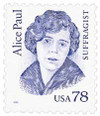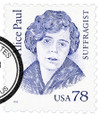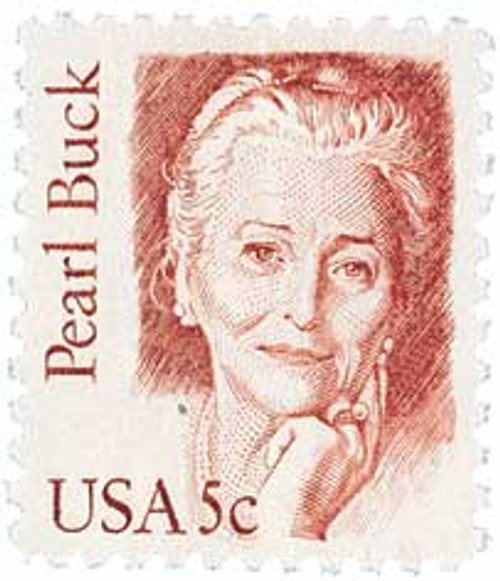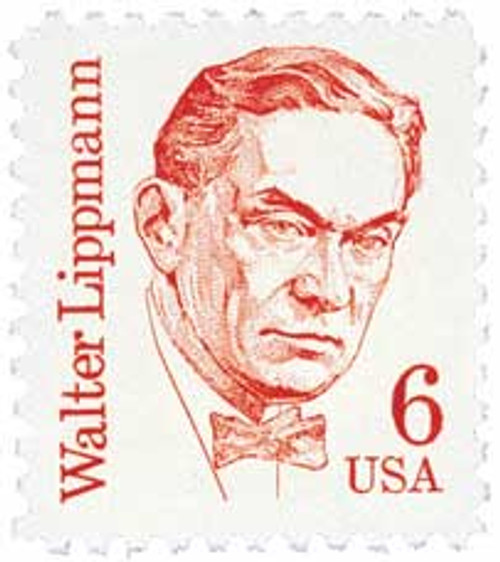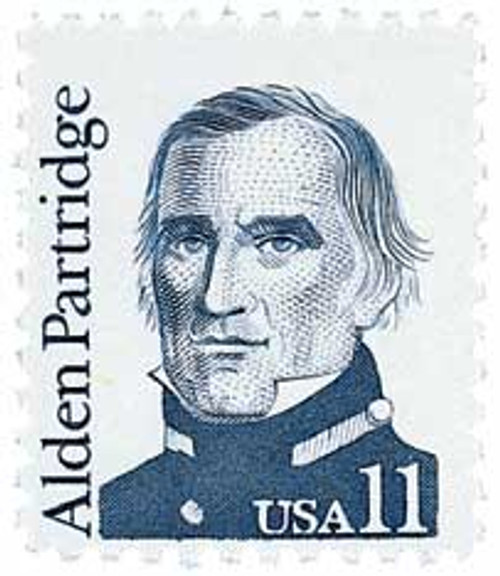
# 2943 - 1995 78c Great Americans: Alice Paul
US #2943
1995 Alice Paul
- 2nd Great Americans stamp issued in 1995
- Honors suffragist Alice Paul
- First US 78¢ stamp
Category of Stamp: Definitive
Set: Great Americans series
Value: 78¢, for letters weighing more than 2 ounces, but less than three
First Day of Issue: August 18, 1995
First Day City: Mount Laurel, New Jersey
Quantity Issued: 100,000,000
Printed by: Banknote3 Corporation of America
Printing Method/Format: Engraved. Panes of 100 (10 across, 10 down) from printing plates of 400 subjects (20 across, 20 down)
Perforations: 11.2 X 11.1
Reason the stamp was issued: On January 1, 1995, the rate for letters weighing more than two ounces but not more than three ounces was increased. This stamp satisfied the new rate. It was the first 78¢ stamp issued by the US. The stamp honors Alice Paul, who spent her life fighting for women’s right to vote.
About the stamp design: The Alice Paul stamp features the work of Chris Calle, who produced the artwork for many of the Great Americans stamps. He drew her portrait in pencil using a photo of Paul from the late 1930s.
First Day City: The stamp was dedicated at Paulsdale, Alice Paul’s family estate in Mount Laurel, New Jersey. The release of the stamp was about a week before a stamp honoring the 75th anniversary of the Women’s Suffrage Amendment was issued.
About the Great Americans Series:
The Great Americans Series was created to replace the Americana Series. The new series would be characterized by a standard definitive size, simple design, and monochromatic colors.
This simple design included a portrait, “USA,” the denomination, the person’s name, and in some cases, their occupation or reason for recognition. The first stamp in the new series was issued on December 27, 1980. It honored Sequoyah and fulfilled the new international postcard rate that would go into effect in January 1981.
The Great Americans Series would honor a wider range of people than the previous Prominent Americans and Liberty Series. While those series mainly honored presidents and politicians, the Great Americans Series featured people from many fields and ethnicities. They were individuals who were leaders in education, the military, literature, the arts, and human and civil rights. Plus, while the previous series only honored a few women, the Great Americans featured 15 women. This was also the first definitive series to honor Native Americans, with five stamps.
The Bureau of Engraving and Printing (BEP) produced most of the stamps, but private firms printed some. Several stamps saw multiple printings. The result was many different varieties, with tagging being the key to understanding them. Though there were also differences in perforations, gum, paper, and ink color.
The final stamp in the series was issued on July 17, 1999, honoring Justin S. Morrill. Spanning 20 years, the Great Americans was the longest-running US definitive series. It was also the largest series of face-different stamps, with a total of 63.
History the stamp represents:
Suffragist Alice Paul was born on January 11, 1885, in Mount Laurel, New Jersey. The oldest of four children, she was a descendant of William Penn (the founder of Pennsylvania). Paul first became acquainted with the suffrage movement through her mother, a member of the National American Woman Suffrage Association, and would attend their meetings as a child.
Paul graduated at the top of her class before entering Pennsylvania’s Swarthmore College. While there, she was part of the Executive Board of Student Government. Paul also studied at the University of Pennsylvania and the University of Birmingham. She spent time in England at the Woodbrooke Quaker Study Center and the London School of Economics.
While in England, Paul worked with women’s suffrage groups, participating in several marches and demonstrations. She was arrested multiple times for her protests, even just for speaking out about women’s rights. Paul, who had worked as a social worker at times, realized that social work wouldn’t be the most effective way to make change. Her work with British suffragists led her to believe that the best route was public protest, including civil disobedience and hunger strikes.
Paul brought these ideas back to America when she joined the National American Woman Suffrage Association in 1912. For a time she served as head of the Washington, DC chapter. The group sought to achieve the right for women to vote through state-by-state campaigns, while Paul believed the best course of action was to lobby Congress for an amendment. This led her and several others to form the National Woman’s Party.
Paul organized parades and protests to gain public support for women’s suffrage. The largest of these was held in Washington, DC, on March 3, 1913, the day before Woodrow Wilson’s inauguration. About 8,000 women marched down Pennsylvania Avenue as about 500,000 people watched, some in support and some opposed. Paul and other suffragists met with President Wilson later that month, and he told them he didn’t think it was time for such an amendment. That April, Paul formed the Congressional Union for Woman Suffrage with the specific goal of lobbying Congress for an amendment.
In 1917, Paul launched a vigorous 18-month campaign in which she and over 1,000 “Silent Sentinels” picketed the White House. They stood outside the gates carrying signs with messages such as “Mr. President, how long must women wait for liberty?” However, they were often subjected to verbal and physical abuse and were arrested for obstructing traffic. At one point, Paul was sent to jail for seven months, during which she held a hunger strike, but they force-fed her. Tales of Paul’s treatment were recounted in the newspaper, which helped her gain public support.
Finally, in 1918, President Wilson announced his support for women’s suffrage, though it would be another two years before the Senate, House, and 36 states approved it. The 19th Amendment was officially adopted on August 26, 1920. Following that victory, Paul worked on the Equal Rights Amendment, which would guarantee women constitutional protection from discrimination. It was submitted to Congress in 1923 and passed by both houses years later, but was never ratified by enough states to become law.
Paul also contributed to the Civil Rights Act of 1964, ensuring it also prohibited discrimination based on sex. Paul continued to campaign for women’s rights, particularly the Equal Rights Amendment, until her death on July 9, 1977.
US #2943
1995 Alice Paul
- 2nd Great Americans stamp issued in 1995
- Honors suffragist Alice Paul
- First US 78¢ stamp
Category of Stamp: Definitive
Set: Great Americans series
Value: 78¢, for letters weighing more than 2 ounces, but less than three
First Day of Issue: August 18, 1995
First Day City: Mount Laurel, New Jersey
Quantity Issued: 100,000,000
Printed by: Banknote3 Corporation of America
Printing Method/Format: Engraved. Panes of 100 (10 across, 10 down) from printing plates of 400 subjects (20 across, 20 down)
Perforations: 11.2 X 11.1
Reason the stamp was issued: On January 1, 1995, the rate for letters weighing more than two ounces but not more than three ounces was increased. This stamp satisfied the new rate. It was the first 78¢ stamp issued by the US. The stamp honors Alice Paul, who spent her life fighting for women’s right to vote.
About the stamp design: The Alice Paul stamp features the work of Chris Calle, who produced the artwork for many of the Great Americans stamps. He drew her portrait in pencil using a photo of Paul from the late 1930s.
First Day City: The stamp was dedicated at Paulsdale, Alice Paul’s family estate in Mount Laurel, New Jersey. The release of the stamp was about a week before a stamp honoring the 75th anniversary of the Women’s Suffrage Amendment was issued.
About the Great Americans Series:
The Great Americans Series was created to replace the Americana Series. The new series would be characterized by a standard definitive size, simple design, and monochromatic colors.
This simple design included a portrait, “USA,” the denomination, the person’s name, and in some cases, their occupation or reason for recognition. The first stamp in the new series was issued on December 27, 1980. It honored Sequoyah and fulfilled the new international postcard rate that would go into effect in January 1981.
The Great Americans Series would honor a wider range of people than the previous Prominent Americans and Liberty Series. While those series mainly honored presidents and politicians, the Great Americans Series featured people from many fields and ethnicities. They were individuals who were leaders in education, the military, literature, the arts, and human and civil rights. Plus, while the previous series only honored a few women, the Great Americans featured 15 women. This was also the first definitive series to honor Native Americans, with five stamps.
The Bureau of Engraving and Printing (BEP) produced most of the stamps, but private firms printed some. Several stamps saw multiple printings. The result was many different varieties, with tagging being the key to understanding them. Though there were also differences in perforations, gum, paper, and ink color.
The final stamp in the series was issued on July 17, 1999, honoring Justin S. Morrill. Spanning 20 years, the Great Americans was the longest-running US definitive series. It was also the largest series of face-different stamps, with a total of 63.
History the stamp represents:
Suffragist Alice Paul was born on January 11, 1885, in Mount Laurel, New Jersey. The oldest of four children, she was a descendant of William Penn (the founder of Pennsylvania). Paul first became acquainted with the suffrage movement through her mother, a member of the National American Woman Suffrage Association, and would attend their meetings as a child.
Paul graduated at the top of her class before entering Pennsylvania’s Swarthmore College. While there, she was part of the Executive Board of Student Government. Paul also studied at the University of Pennsylvania and the University of Birmingham. She spent time in England at the Woodbrooke Quaker Study Center and the London School of Economics.
While in England, Paul worked with women’s suffrage groups, participating in several marches and demonstrations. She was arrested multiple times for her protests, even just for speaking out about women’s rights. Paul, who had worked as a social worker at times, realized that social work wouldn’t be the most effective way to make change. Her work with British suffragists led her to believe that the best route was public protest, including civil disobedience and hunger strikes.
Paul brought these ideas back to America when she joined the National American Woman Suffrage Association in 1912. For a time she served as head of the Washington, DC chapter. The group sought to achieve the right for women to vote through state-by-state campaigns, while Paul believed the best course of action was to lobby Congress for an amendment. This led her and several others to form the National Woman’s Party.
Paul organized parades and protests to gain public support for women’s suffrage. The largest of these was held in Washington, DC, on March 3, 1913, the day before Woodrow Wilson’s inauguration. About 8,000 women marched down Pennsylvania Avenue as about 500,000 people watched, some in support and some opposed. Paul and other suffragists met with President Wilson later that month, and he told them he didn’t think it was time for such an amendment. That April, Paul formed the Congressional Union for Woman Suffrage with the specific goal of lobbying Congress for an amendment.
In 1917, Paul launched a vigorous 18-month campaign in which she and over 1,000 “Silent Sentinels” picketed the White House. They stood outside the gates carrying signs with messages such as “Mr. President, how long must women wait for liberty?” However, they were often subjected to verbal and physical abuse and were arrested for obstructing traffic. At one point, Paul was sent to jail for seven months, during which she held a hunger strike, but they force-fed her. Tales of Paul’s treatment were recounted in the newspaper, which helped her gain public support.
Finally, in 1918, President Wilson announced his support for women’s suffrage, though it would be another two years before the Senate, House, and 36 states approved it. The 19th Amendment was officially adopted on August 26, 1920. Following that victory, Paul worked on the Equal Rights Amendment, which would guarantee women constitutional protection from discrimination. It was submitted to Congress in 1923 and passed by both houses years later, but was never ratified by enough states to become law.
Paul also contributed to the Civil Rights Act of 1964, ensuring it also prohibited discrimination based on sex. Paul continued to campaign for women’s rights, particularly the Equal Rights Amendment, until her death on July 9, 1977.








